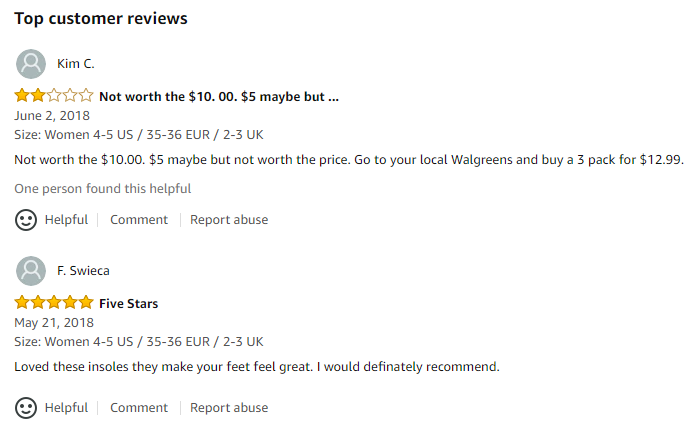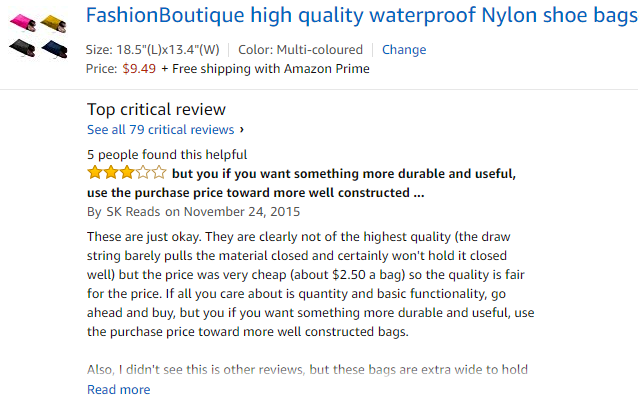The average conversion rate of an eCommerce store varies between 2% to 4% depending on the source of traffic, user’s device and your industry. The conversion rate is likely to be lower on a mobile device like smartphone and higher on desktops.
According to a whitepaper published by ComScore, there are a handful of reasons why customers do not convert well on smartphones. Over one-fifths of consumers have security concerns when browsing a store on their mobile device. An equal number of consumers also cite their inability to navigate or view product details as reasons for not purchasing a product. A marginally smaller number of users state that they were unable to input details over the mobile site or app for purchase.
In a broader sense, some of these factors are not limited to just smartphones. Poor website navigation or the the lack of security related assurances bring down the reputation of a business in the eyes of a customer and can thus contribute to a lower conversion rate.
Low conversion does not always mean low reputation
At the outset, it is worth pointing out that conversion rate is not necessarily a good measure of a site’s reputation. As Monetate founder David Brussin explains in this video, some of the largest brands have shockingly low conversion rates owing to the fact that their customers consume their content quite heavily. Such customers tend to drop in to the site each day to check for the latest and this brings conversion rate down. However, given their repeat content consumption patterns, such customers tend to be quite loyal and contribute to high revenues over the long term.
This is true in the case of Amazon.com. A study published last year found that over half of all product searches today begin on Amazon.com. This is a dramatic jump since 2014 when only a quarter of all searches were initiated on Amazon. Given the high drop-in rates, it is likely for Amazon to witness relatively lower conversion rates. But that does not mean its reputation is at stake here.
However, if you do not have a very loyal customer base and repeat visits are not adequately high, then conversion rate is the closest metric to assess the trustworthiness of your site. This is especially true in the case of search engine visits where customers drop in with specific intent – an inability to convert these audiences is an indication of low trust.
Measuring eCommerce reputation
ECommerce reputation may be measured site-wide or product-wise. Factors that we mentioned above like site navigation and lack of security assurances contribute to a website seeing poor conversion rates overall. In addition to this, there are also factors contributing to poor conversion for specific products.
This is apparent on large online stores like Amazon where the authority and reputation of a site alone may not matter when a prospective buyer is mulling over a purchasing decision. In such cases, the ratings and reviews that the product or seller has secured can play a very important role in determining reputation and consequently the conversion rate.
Factors affecting reviews
Why exactly do customers rate a product or seller poorly? One of the most influential aspects is the perceived return on investment. A $10 shoe may fetch a better rating than a higher quality one at $50 if the customer perceives its ROI to be better. In this case, the price point serves as a gatekeeping mechanism and once a customer buys the product, its ratings are based more on the returns that they get rather than the absolute quality of the product itself.
At the same time, it is worth pointing out that customers have a benchmark for quality and any product that fails to meet these basic quality standards tend to get poor ratings, regardless of how cheap and affordable it is. When a product fails to work or is so evidently inferior, customers no longer look at the low pricing, but instead rate it low regardless of what you advertised it as.
The second driver of user ratings is what the customer expects the product to be, versus what they receive in reality. A plastic phone cover that is advertised as ‘cheap and affordable’ is likely to get a lot more positive ratings than when it is advertised as ‘high quality phone cover’ at the same price point. A customer expects the advertised benefits to shine through in the product. When that fails, ratings are likely to go down.
The third factor that influences ratings is customer experience during the transaction. The ideal shopping experience should involve minimal friction both during the transaction and after that. Lengthy shipping times, missing components and a non-responsive customer support system could potentially ruin the experience and could force a customer to leave poor ratings.
While these factors affect ratings from previous customers, they also subsequently reduce the reputation of your eCommerce store as a whole, thus affecting all future transactions.
Fixing eCommerce reputation
Identifying the reasons customers provide poor ratings is the first step towards building a better reputation. Here are a few strategies to achieve this.
Product quality: The surest way to achieve better product ratings is by improving the quality of your product. There are now two ways to do this. Investing in higher quality materials is one way to do it. However, this could also potentially shoot the price of your product up and potentially bring revenues down. Another way to do this is by reducing your margins and offering a better quality product at the same price.
As we noted earlier, consumers look at the ROI of a purchase and it is thus more likely to gain reputation when you offer a higher quality product at the lower price point than increasing the price of your product.
This is however not the only way to do this. ECommerce sellers have also gained by investing in higher quality products. While this pushes product prices up, customers are more likely to be loyal to such businesses. The long-term revenues from this strategy may turn out to be higher than the alternate strategy. Every business is unique and it is up to you to define the strategy for your business.
All this is easier said than done. If you do not make your own products, then chances are high that the quality of your product may vary from shipment to shipment and depending on your supplier. The reputation of your business thus depends on the reputation your supplier enjoys.
It is highly recommended that you diversify your procurement from different suppliers and eventually pick one who is most reliable. If your store is on a third party platform, look out for their own in-house verified suppliers list. Shopify offers one such list through their Oberlo platform.
Product positioning: Your product positioning strategy must be aligned to your production. That is, advertise the product on the basis of what it is best known for. For instance, promote a sweater as one made of “superior wool” only if that is truly the case. Similarly, emphasize on your product’s durability only if it is really durable.
A common mistake among eCommerce sellers is to craft a positioning statement based on what sells. This creates a misalignment between what your product truly is, and how it is represented. This brings down the trustworthiness of your product thus contributing to poor ratings.
Customer experience: This is by far the most critical component of any online transaction. To make the customer’s journey truly seamless, an eCommerce website must remove any and all hurdles along the way. This includes surprise price increases (in the form of taxes, shipping fee, convenience charges, etc.), malfunctioning payment gateways and lengthy checkout forms to mention a few. There are a few ways to fix this.
Bring down the number of steps between a product being added to cart, and completing the transaction. If you need additional details regarding the product, seek them out after the transaction is complete.
Adhere to the WYSIWYG (What-You-See-Is-What-You-Get) principle. That is, if you advertise a product for $100, do not add other fees before the checkout process. If you showcase a black bag in the product image, do not ship a product of another color.
Invest in live chat – customers have dozens of different questions about a product that may not always be captured in the product description. A live sales assistant offers the reassurance that the customer needs to convert.
Over to you
The pointers mentioned above are by no means comprehensive. Each eCommerce store is unique in its own way and what works on one site may not necessarily work on others. We would love to hear from you – what steps did you take for your customers to increase the reputation of your product or brand? Share them with us in the comments.





